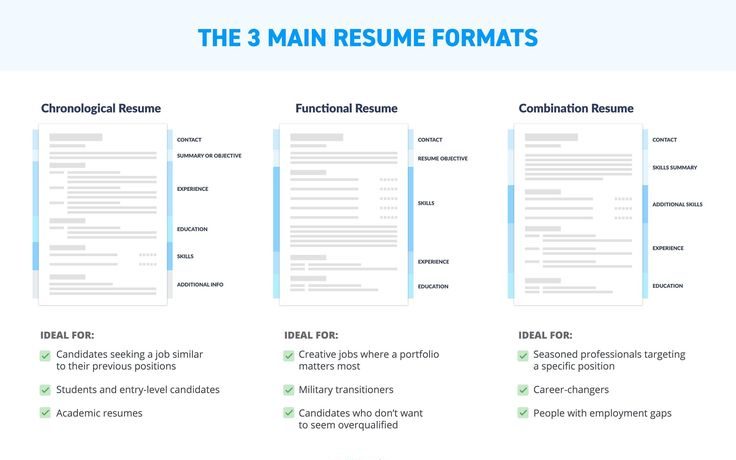If you are a college student or a fresher stepping into the professional world, creating a well-structured resume is your first step to success. A polished and ATS-friendly resume can…

Chronological Resume Format: A How-to-Write Guide
Landing your first job can be both exciting and daunting. One of the most crucial steps in this journey is crafting a compelling resume that effectively showcases your skills and potential to employers.
This article delves into the chronological resume format, a popular choice for freshers, guiding you through its structure, and writing tips, highlighting its benefits and drawbacks.
What is a Chronological Resume Format
A chronological resume presents your work experience in reverse chronological order, starting with your most recent position and working backward. This best resume format for freshers resume format emphasizes your professional growth and allows employers to easily track your career progression.
It’s an ideal choice for freshers who:
- Have limited work experience but want to showcase any internships, volunteering, or part-time jobs they’ve held.
- Possess a clear career progression within a specific field.
- Want to highlight specific achievements within each position held.
How to Write a Chronological Resume Format for Freshers?
Here’s a step-by-step guide to crafting a strong chronological resume as a fresher:
Contact Information:
- Include your full name, professional email address, and phone number.
- Ensure your email address is professional and easy to remember.
- If you have a professional website or online portfolio, include a link in this section.

Professional Summary or Objective:
- This is a brief overview (3-4 sentences) of your skills, experience, and career goals.
- For freshers, a career objective statement is recommended.
- Mention the specific position you’re applying for and highlight relevant skills that make you a suitable candidate.
Work Experience:
- List your work experience in reverse chronological order.
- Include the company name, job title, and dates of employment for each position.
- Use action verbs and specific examples to describe your responsibilities and achievements.
- Quantify your achievements whenever possible.
- For freshers with limited experience, focus on relevant coursework, projects, or volunteer work.
Education:
- List your educational background in reverse chronological order.
- Include the institution name, degree earned, and graduation date.
- Mention any relevant coursework, academic achievements, or honors.
- If you have ongoing education, mention it as well.
Skills:
- List your relevant skills, including hard skills (technical skills) and soft skills (interpersonal skills).
- Tailor your skills list to the specific job you are applying for.
- Include a mix of common and specific technical skills relevant to the industry.
Additional Sections (Optional):
- Consider including additional sections if they enhance your application and demonstrate relevant skills or experiences.
- Examples include volunteer work, awards & recognitions, certifications, languages spoken, or hobbies & interests (if relevant to the position).
Chronological Resume Format Template
Here’s a basic chronological resume template for freshers:

Simple Resume Format for Freshers
A simple resume format for freshers often uses the chronological resume format, which is ideal for showcasing your academic background and work experience in a clear, organized manner. In this format, you first list your most recent experiences, whether it’s education, internships, or any relevant projects.
The chronological resume format helps recruiters quickly see your career progression and the skills you’ve developed. Keep the layout clean and professional, focusing on your strengths and key achievements. This format is effective for freshers as it emphasizes your educational accomplishments and any relevant experience you’ve gained.
Best Resume Format for Freshers: Chronological Resume Format
The Chronological Resume Format is ideal for freshers as it highlights your educational qualifications, internships, and skills in a structured manner. Here’s how to organize it:
- Contact Information: Include name, phone number, email, and LinkedIn profile.
- Career Objective: A concise statement aligning your goals with the job.
- Education: List your degrees, institution, and year of graduation in reverse chronological order.
- Internships/Experience: Highlight internships, volunteer work, or part-time jobs, focusing on key achievements.
- Skills: Mention relevant technical, soft, or language skills.
- Certifications: Include any certifications that enhance your profile.
- Hobbies/Interests (Optional): Add personal interests to showcase personality.
This format ensures your most recent and relevant achievements are prominently displayed, making it easy for employers to assess your potential.
Benefits and Drawbacks of Chronological Resume Format
Like any resume format, the chronological approach has its own set of advantages and limitations:
Benefits of Chronological Resume Format
- Easy to read and understand, especially for recruiters accustomed to traditional resume formats.
- Highlights your career progression and demonstrates stability.
- Emphasizes your most recent experiences and achievements, making them relevant to the current job market.
- Showcases a clear timeline of your academic and professional journey.
Drawbacks of Chronological Resume Format
- This may accentuate employment gaps or lack of experience, particularly for freshers with limited work history.
- Less suitable for career changers or individuals with non-linear career paths.
- Requires careful editing to ensure relevance and coherence, especially when including older experiences.
In the competitive landscape of job hunting, mastering the chronological resume format can significantly enhance a fresher’s chances of securing interviews and landing their dream job. By strategically organizing your experiences, skills, and achievements in reverse chronological order, you can effectively showcase your potential and make a lasting impression on potential employers.
Related Reads:
- Online Resume Maker for Freshers
- How To Pass The 6-Second Resume Test?
- How to Utilize a Resume Builder for Your Job Search?
FAQs on Chronological Resume Format
What is the chronological format for a resume?
A chronological resume is a resume format that lists your work history in reverse chronological order, starting with your most recent job and ending with your earliest one. It highlights your career progression and achievements.
How many pages is a chronological resume?
A chronological resume should be one or two pages long, depending on your level of experience and the job requirements. A one-page resume is ideal for entry-level or mid-level candidates, while a two-page resume is suitable for senior-level or executive positions.
Should a CV be chronological?
A CV (curriculum vitae) can be chronological, but it can also be functional or combination. A chronological CV emphasizes your work experience and education, while a functional CV focuses on your skills and achievements. A combination CV blends both formats.
Is a chronological resume good for freshers?
A chronological resume can be good for freshers who have a consistent and relevant work history, or who want to showcase their career growth and potential. However, a chronological resume may not be the best choice for freshers who have gaps in their work history, who have changed careers frequently, or who are applying for a job in a different or unrelated field.
Which resume format is best for freshers?
The best resume format for freshers depends on their work experience, career goals, and the job requirements. A chronological resume format may work well for freshers who have a solid and related work history, while a combination or functional resume format may be more effective for freshers who have limited or diverse work experience, or who want to highlight their skills and qualifications.
Latest Posts
How to Write a Resume Headline for Freshers
Your resume headline is the first thing a recruiter will see, so it’s important to ensure it’s strong and attention-grabbing. Even if you are new to the job market and…
How to Make a BCom Fresher Resume?
Graduating with a Bachelor of Commerce (BCom) degree opens up a world of opportunities in the business sector. However, landing that first job can be challenging, especially when you’re competing…
About Me in Resume for Freshers: How to Write, Examples
The journey from college to your first job is an exciting but often challenging transition. As a fresher or college student preparing to step into the professional world, your resume…
Best CV Formats for Freshers: Simple, Professional & Job-Winning Templates
Creating an effective CV (Curriculum Vitae) is the first step towards landing your dream job or internship as a fresh graduate. Your CV is your initial introduction to potential employers…
Popular Posts
Best CV Formats for Freshers: Simple, Professional & Job-Winning Templates
Creating an effective CV (Curriculum Vitae) is the first step towards landing your dream job or internship as a fresh graduate. Your CV is your initial introduction to potential employers…
How to Write Mail for Job Application – Explained
A job application email is a professional email that you send to a potential employer to express your interest in a job opening. It is typically accompanied by your resume…
250+ Group Discussion Topics for Interviews with Expert GD Tips
Group discussions (GD) are a critical aspect of the interview process for college students and freshers. They are commonly used in campus placements, competitive exams, and job interviews to evaluate…
How to Write a Job Application Letter – Tips, Format, and Examples
When it comes to applying for your first job, making a great first impression is crucial. As a recent graduate, you might feel a little intimidated by the idea of…
Latest Mechanical Engineering Interview Questions and Answers
Entering the world of mechanical engineering as a fresher is an exciting journey, but the path to success often involves navigating through challenging interviews. In this guide, we’ve curated a…
